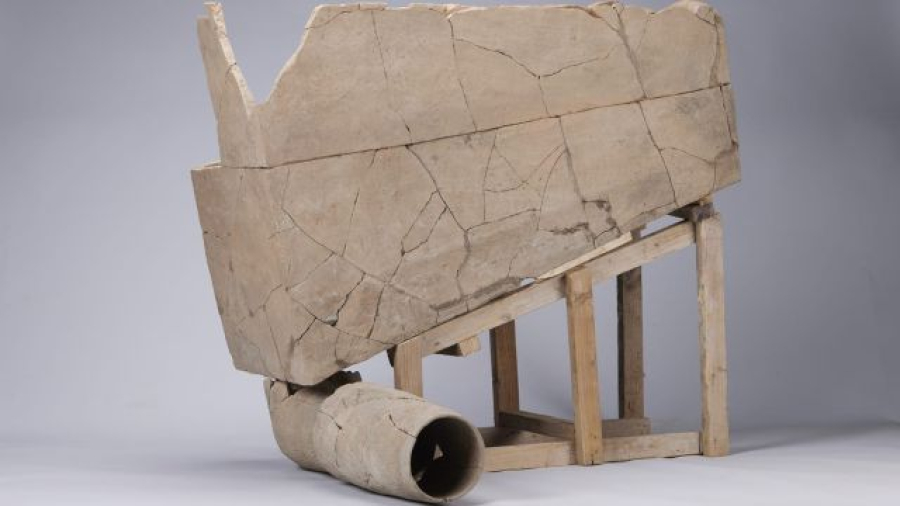Archeologists in China have found the remains of what may be the world's oldest known flush toilet.
Broken parts of the 2,400-year-old lavatory, as well as a bent flush pipe, were unearthed last summer by a research team among ancient palace ruins in the Yueyang archaeological site in the central city of Xi'an, according to Chinese state media.
Details of the find were released last week, sparking widespread interest in China and offering a rare insight into the privileged and comparatively advanced world of the country's ancient ruling elite.
Described by researchers as a "luxury object," the toilet was thought to have been located inside the palace, with a pipe leading to an outdoor pit, according to state-owned China Daily.
Liu Rui, a researcher at the Institute of Archeology at the Chinese Academy of Social Sciences, who was part of the excavation team, told state media the toilet would have likely been reserved for high-ranking officials during the Warring States Period (475-221 BC) and the later Han Dynasty (206 BC-AD 220). He added that servants would likely have poured water into the toilet bowl every time it was used.
"The flush toilet is concrete proof of the importance the ancient Chinese attached to sanitation," Liu said, adding that there were very few records of indoor toilets in ancient times.
Access to clean, flush toilets remain an issue in parts of modern China. Early in his tenure, Chinese leader Xi Jinping promised to "revolutionize" the country's restrooms, as part of efforts to improve rural hygiene.
"The toilet issue is no small thing, it's an important aspect of building civilized cities and countryside," Xi said in an article in the state-owned People's Daily in 2018. "This work should be advanced as a specific task of rural revitalization and such shortcomings that affect the quality of people's life should be filled with great efforts."
Prior to the newly announced discovery, the invention of the first flush toilet was widely credited to English courtier John Harington, who supposedly installed one for Queen Elizabeth in the 16th century, though 4,000-year-old drainage systems that might have been connected with toilets have been found in northwest India.
The ruins from Yueyang, the former capital of Qin State and later the first capital of the Han Dynasty, were discovered in the 1980s. The recent find is part of a broader effort to understand ancient Chinese dynasties, including how people lived and how their cities were constructed, the Institute said in a statement announcing the discoveries.
Archaeologists are now analyzing soil samples collected from the toilet in hopes of finding out what people ate during that time, according to China Daily.
Written by
Tara Subramaniam, CNN














